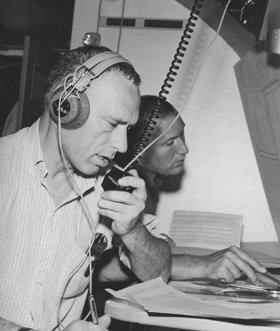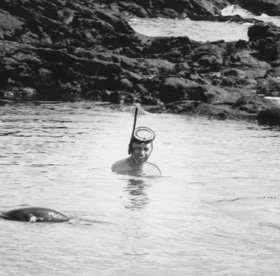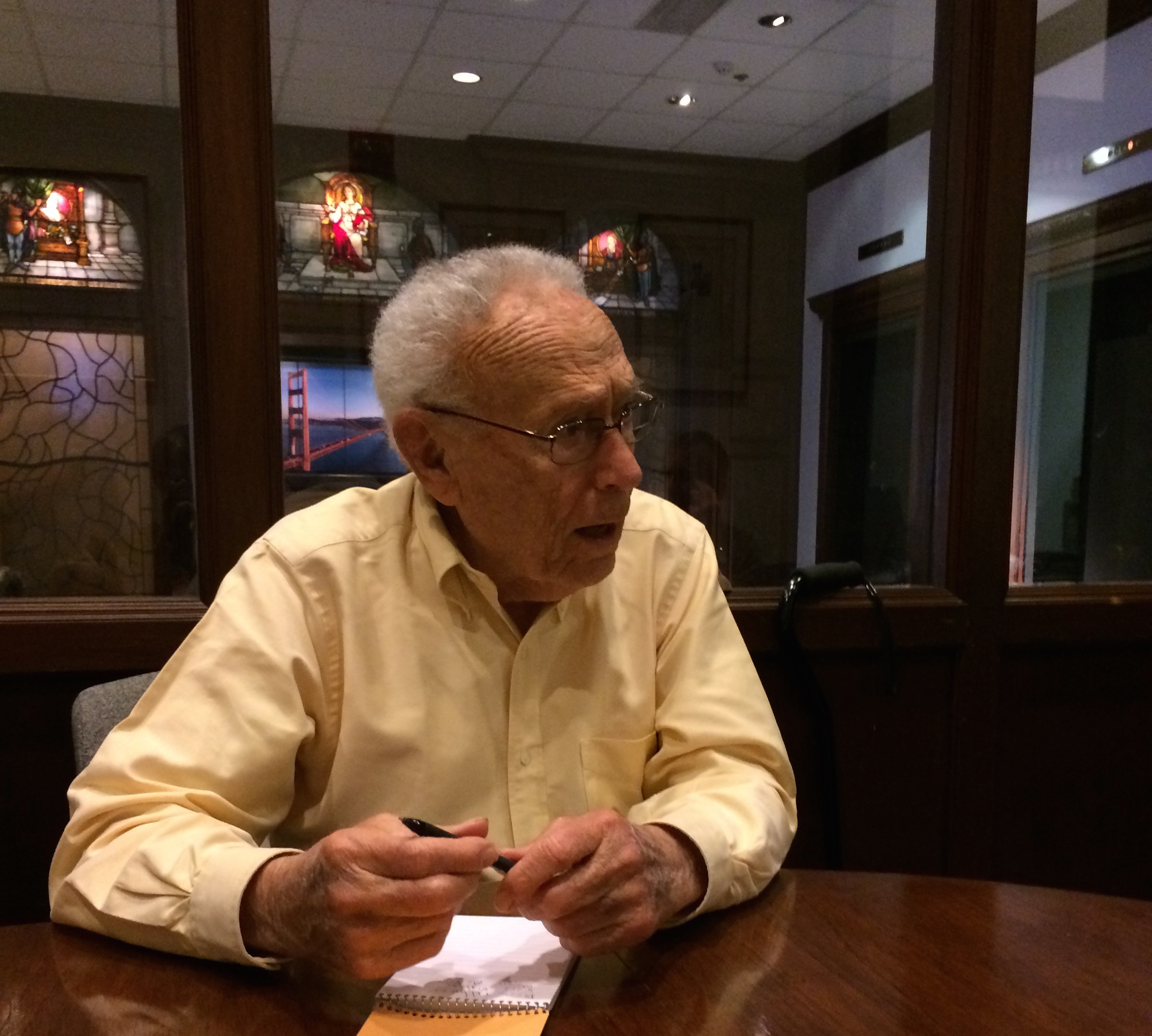Donation Campaign to Bring Global Science Writers to San Francisco for 2017 Conference
Travel Fellowships Honor Journalist David Perlman, 97
Update June 1: The Perlman Fellowships have been fully funded! Thanks to all who contributed. Personal donations to the conference continue to be vital and will be gratefully accepted.
United States science writers have started a special individual donation campaign to bring their international colleagues to San Francisco in October 2017 for the 10th World Conference of Science Journalists, the first of its kind to be held in this country.
The donations will fund WCSJ2017 travel fellowships named in honor of San Francisco Chronicle Science Editor David Perlman, one of America’s most revered science journalists and surely the longest-serving member of the trade. A mentor to generations of science writers, Perlman has been a globetrotting newspaper reporter for nearly 75 years. Considered the dean of American science writing, he has covered the space race, arms control, the origin and rise of AIDS, earthquakes, genetic engineering, medical progress, human evolution—the works—and is still on the job as he nears age 98.
The governing boards of the National Association of Science Writers (NASW) and Council for the Advancement of Science Writing (CASW) have contributed approximately $5,000 in personal donations to launch the WCSJ2017 David Perlman Travel Fellowships. The U.S. science writing organizations created this travel fund as an expression of welcome and support for professional and student writers from around the world who hope to attend the upcoming meeting.
Leaders of the Association of Health Care Journalists (AHCJ) have made additional contributions to the Perlman Travel Fellowships. All three U.S. organizations are affiliated with the World Federation of Science Journalists, which connects 52 science journalism membership associations around the globe.
Matching funds pledged
All individual donations will be tax-deductible to the extent allowed by law and will be matched one-to-one, doubling the impact of each contribution. “We’re thrilled to announce that an anonymous donor has committed up to $20,000 to match individual contributions made through January 31, 2017,” said Cristine Russell, co-chair of the WCSJ2017 Organizing Committee. She first met Perlman four decades ago as a science student thinking about going into science journalism.
Members of NASW will be invited to make online donations to the Perlman Travel Fellowships during annual membership renewal, which begins in late November 2016. “We want to encourage our members to show their support individually,” said NASW President Laura Helmuth, the Washington Post’s health, science and environment editor.
“It is more important now than ever to have informative international science writing on the most important global issues of our time, from climate change to infectious diseases, which know no borders,” Helmuth said.
The Perlman fellows will be selected through a competitive application process in early 2017. “About half of the 1,200 science writers who we expect to attend are from outside the U.S. Many cannot swing the costs on their own,” said Charles Petit, co-chair of the new Perlman fellowship fund-raising drive with Russell.
“Generous philanthropic donors have already pledged substantial gifts to help cover travel and lodging, but we need a lot more,” said Petit, who worked alongside Perlman at the San Francisco Chronicle for 26 years. Organizers are working to raise more than $600,000 in travel funds to bring speakers and conference attendees from around the world.
About David Perlman

David Perlman files a story by radio from the NASA observatory Galileo I, over the Pacific at 39,000 feet, during a 1965 solar eclipse expedition.
Perlman served as NASW President from 1970 to 1971 and CASW President from 1976 to 1980. He became science editor of the Chronicle more than 60 years ago and is still covering science at the Bay Area daily paper. A native New Yorker, Perlman is a graduate of Columbia University and its journalism school. He first started work at the Chronicle just before World War II (during which he served four years in Europe as an Army officer). He returned in 1952 after freelancing for magazines and newspapers from Paris. Becoming the Chronicle’s science reporter in the late 1950s, the intrepid Perlman has gone where the story is: traveling to Antarctica for polar science, boarding the the research ship Knorr for an expedition to the Galapagos Rift Zone, even camping at archaeological digs in Ethiopia at age 87.

A territorial bull sea lion chases away David Perlman, who had been snorkeling in a bay off Fernandina Island, Galápagos, in 1964. (Photos courtesy of David Perlman.)
Throughout Perlman’s distinguished career, helping other science writers, especially those just starting out, has been dear to him. “I’m pleased to help bring science writers from around the world to San Francisco,” Perlman said. “I hope all my colleagues will pitch in, and I will too.”
Information about individual donations to WCSJ2017 may be found at wcsj2017.org/support/individual-donations.
About the 10th World Conference of Science Journalists
WCSJ2017 will be organized by NASW and CASW and hosted by the University of California campuses at Berkeley and San Francisco. NASW is the oldest and largest professional science writing organization in the U.S., with more than 2,500 members. CASW, an educational nonprofit dedicated to enhancing the quantity and quality of science news reaching the public, is managing donations and sponsorships for the conference. Opportunities for foundations, other non-profits, businesses, and individuals to support the conference can be found on the WCSJ2017.org website.
Follow us on Twitter
@ScienceWriting
@ScienceWriters
@WCSJ2017 #WCSJ2017
@WFSJ

